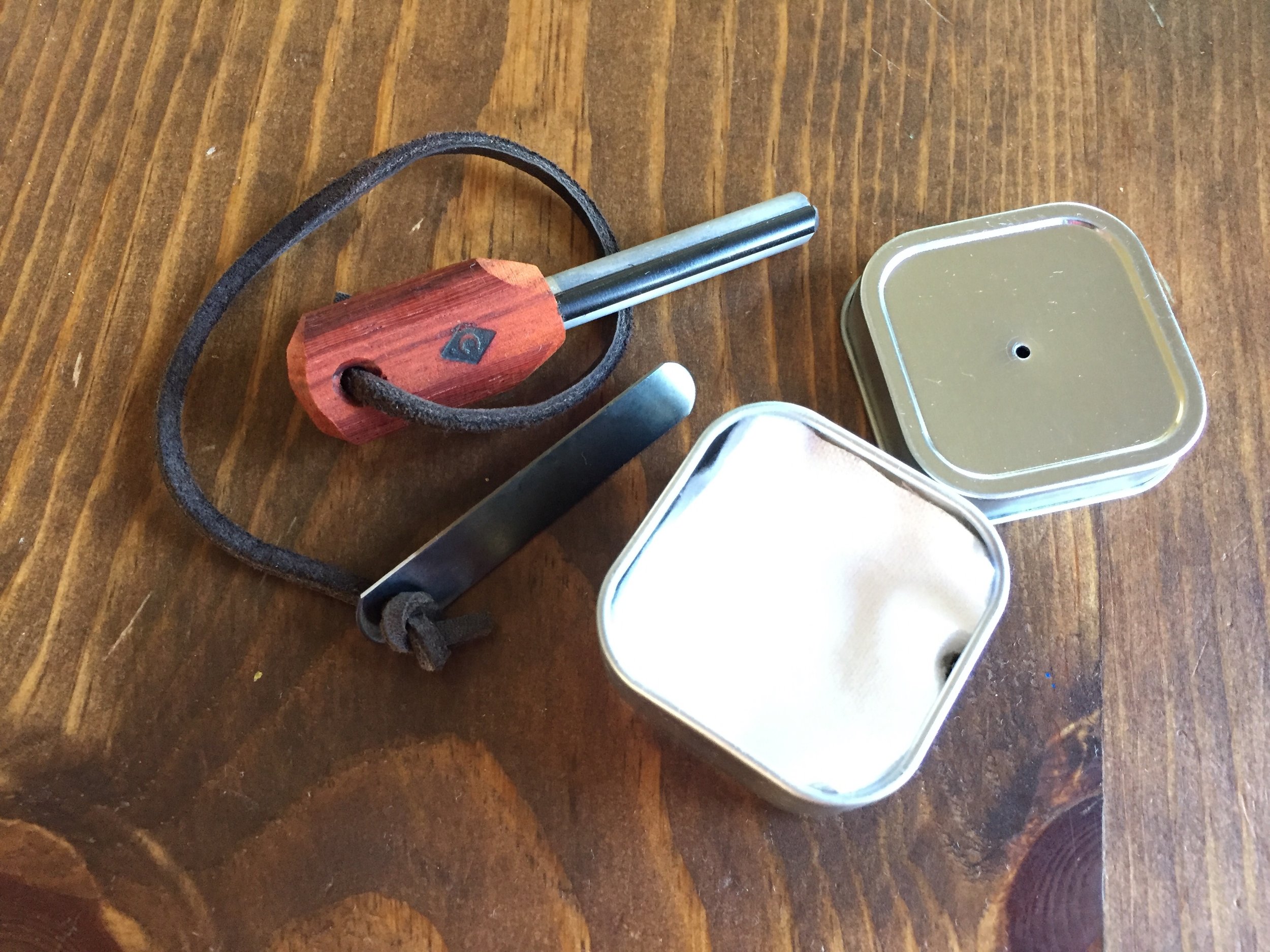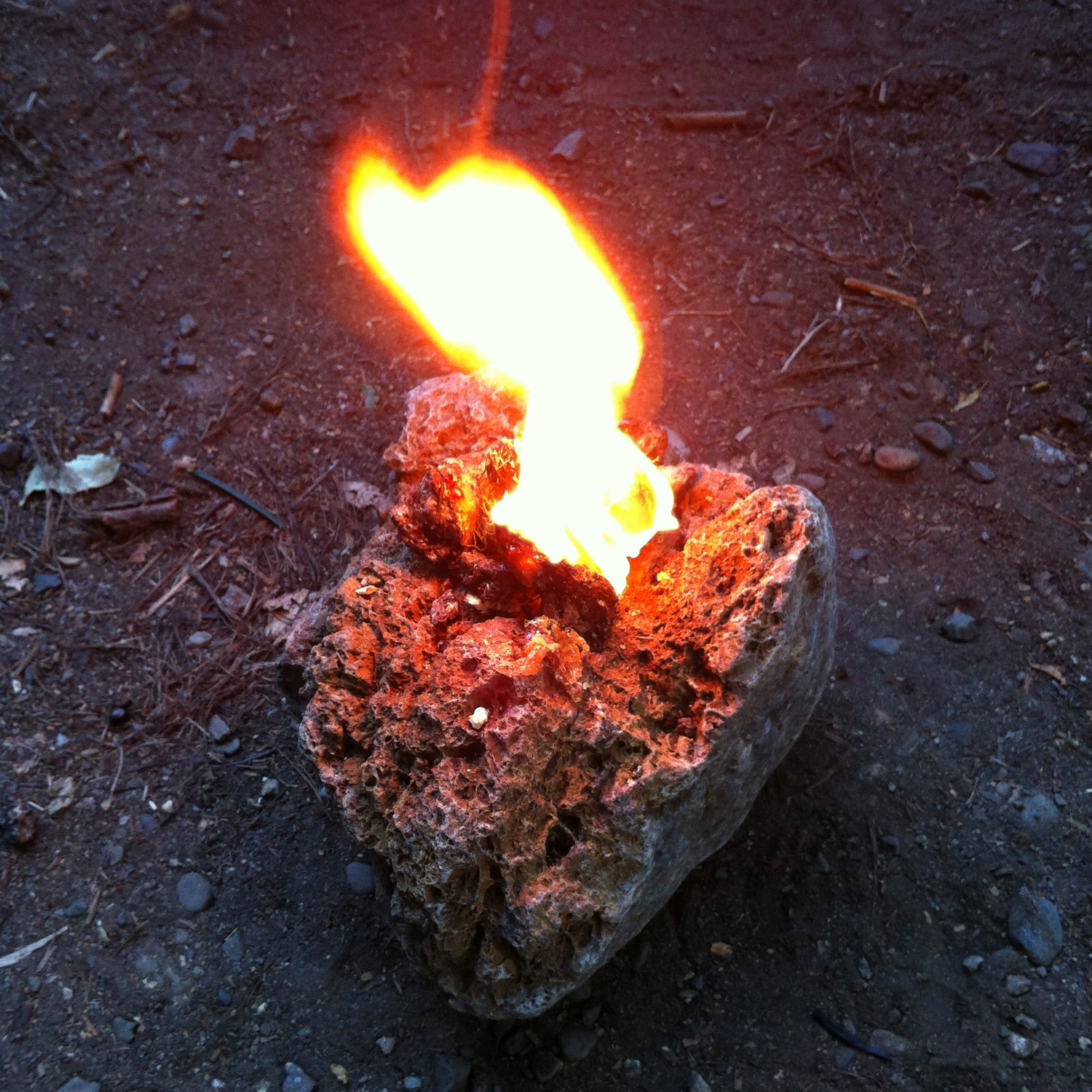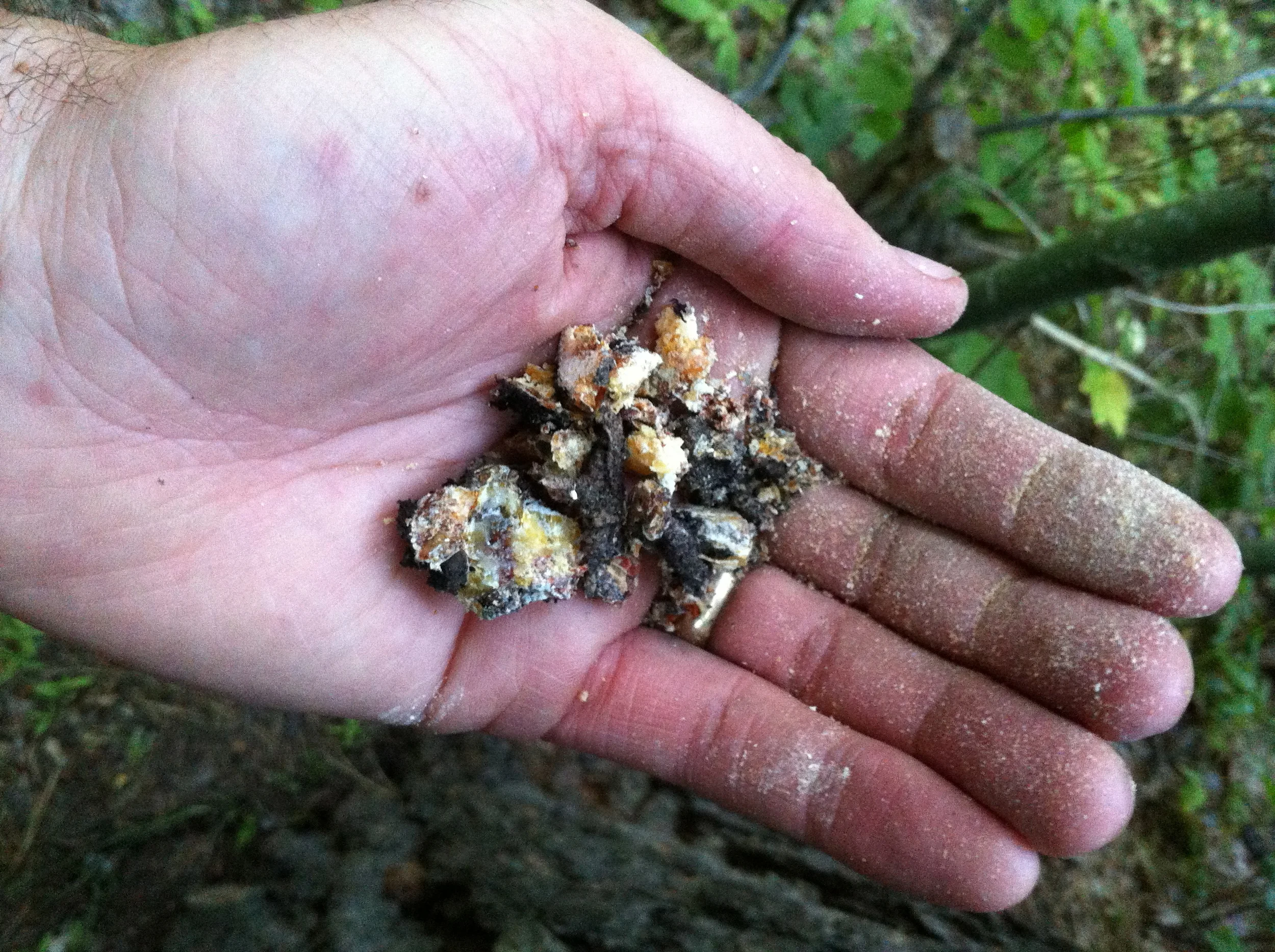The stage between getting that initial timid flame and a fully established fire can be one of the most challenging. It's where a lot of fires go out. Especially in wet conditions. This video will help you get past that danger zone consistently with just materials you can find in nature. Never worry about getting a fire going again!
fire
Char cloth and fire making with the Colter Spark Kit
I have always loved the art of fire building. It was probably the first true outdoor skill that I felt extremely passionate about. It can be extremely challenging, depending on the circumstances. I spent a lot of time learning about different ways that work in various conditions. As a youth of about 12 years old I learned the skill of traditional flint and steel. It quickly became my preferred method. As part of that I learned about char cloth, which was a game changer for me.
Char cloth is simply a piece of cloth that has been partially burned in a low oxygen environment. Like traditional wood charcoal. It turns into a spark catching spider web. Any spark that hits it sticks and slowly grows until the entire piece of char cloth is burned. Depending on the size of the cloth that can last up to a couple minutes. That gives you a way longer window to get a flame going! I love traditional flint and steel, but the modern ferro rod certainly has it's advantages. If you've ever used a ferro rod and found yourself frustrated at not being able to get a spark to catch on anything, try char cloth... You will only need one solid strike and you'll capture multiple sparks. Transfer the cloth to your tinder bundle and make sure the glowing ember is touching the dry tinder. I usually fold the bundle around the ember. You've got to find a good balance between not enough contact and smothering the ember. Then gently blow on the ember until it catches and the bundle catches fire.
As a long time passion of mine, I have had a tin for making char cloth for years. Several different ones, to be honest. Most ended up being bigger than they needed to be. So I set about the create the perfect char cloth kit. It's a small tin so it won't take up very much space, or weight. It is the perfect carrying case and you can use it to make more when you run out. The kit comes with 15 100% cotton flannel squares, ready to be charred. Just place the tin in the fire (or barbecue) for 3 and a half minutes and its ready. You don't have to use the specific ferro rod that comes with this kit. You can use traditional flint and steel, or and old lighter that's run out of fuel. Anything that produces a spark will work.
But the ferro rod with this kit has a few extra bonuses that make it a fire starting powerhouse. The ferro rod itself is backed with a magnesium rod. Magnesium shavings burn at a temperature 7 times higher than a lit match. It can ignite even stubborn damp tinder. Also the handle is made from a resin rich wood that can be shaved off to make excellent tinder if you can't find anything suitable in the wild. Not to mention that the ferro rod can get wet and still work just fine. Try that with matches (actually don't...)
This kit is a perfect addition to any survival kit, bug out bag, camping kit, or any day hike pack list. Head over to our shop and pick one up for your next adventure!
Pine Sap Use #247: the sap lamp
One of my favorite parts of being in the woods has always been the challenge of creating usable objects from natural resources. It requires creativity to make due with what nature provides. There are an abundance of materials available in nature that make things easier, if you know how to use them. Pine sap is one of them. There are a million ways you can use pine sap, and eventually I plan on talking about more of them. But for now I will focus on the pine sap lamp.
The pine sap lamp is simple and can be improvised just about anywhere there are pine trees. There are 4 items you will need: a bowl shaped rock, pine sap, moss (or something else to act as a wick), and a flame (or at least a good spark).
Once you have a nice rock picked out, start collecting sap. It can be old and dried out or fresh and gooey. Doesn't matter. I collected a palm full for this exercise. Don't worry if there are chunks of bark in the sap, they will melt out.
I used a piece of moss for the wick. I imagine a sturdy piece of bark or even grass would probably work. In a dire circumstance, you could cut a strip off of a bandana or a pair of jeans to use as a wick.
Next you put the wick in the rock and place the sap around the wick leaving just enough of the wick exposed to light. I used a ferro rod to light the moss this time.
The wick will begin to burn and heat up the sap. It eventually will make a dark pool of sap at the bottom of the rock. It will burn as long as you keep feeding it sap. This one handful burned for over half and hour! Not too shabby.
Once the sap begins to melt it will run all over the place. That's why I recommend a good deep rock. In this case it ended up pouring out the side. Once it cools you can just throw those pieces of sap back into the lamp.
It puts off heat and fair amount of light but I wouldn't recommend cooking over it. The smoke that comes off is thick and black. If you were roasting meat over this flame it would certainly take on a very unpleasant and probably unhealthy flavor. If you were to use a pot it would be blackened something fierce. But for a makeshift light and heat source, it works quite well.
This would also make an excellent base for a campfire if you are having a hard time getting a fire going in damp conditions (another Pacific Northwest specialty). Sap is by nature waterproof. If you don't believe me just try to wash sap off your hands with only water. If you can find a good pile and get it lit, it will give you a nice burn to get other, more stubborn kindling blazing.
I would love to hear about your favorite uses for pine sap.
John








